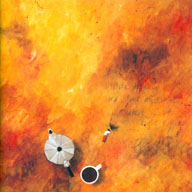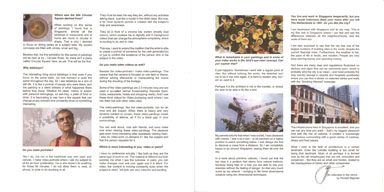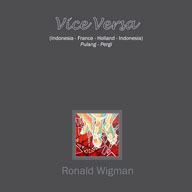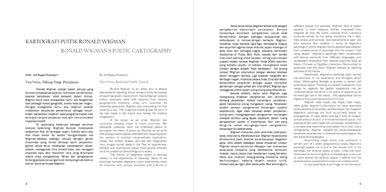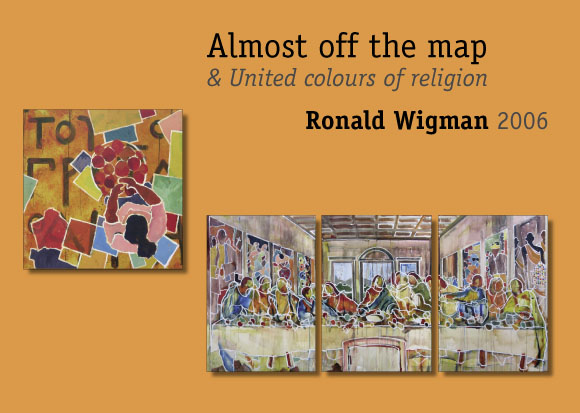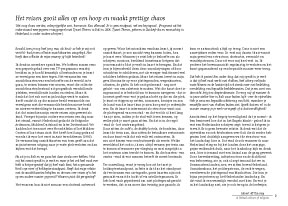ronald wigman ![]() portable art home
portable art home
biography
Galerie Arcane 21, Sauve (F) 1985___Oude Gracht 380, Utrecht 1985___Royal Palace Amsterdam 1987 *___Galerie Krikhaar, Amsterdam 1988 *
Shaffy theater, Amsterdam 1989 ___Galerie XY, Amsterdam 1990___Beurs van Berlage, Amsterdam 1990___Free University Hospital, Amsterdam 1990
Jan des Bouvrie, Bussum 1990 *___Galerie Drie Gratiën, Amsteram 1991___Picaron, Amsterdam 1991 * ___Galerie het Magazijn, Amsterdam 1991
Christofori, Amsterdam 1991 *___VNO-NCW, Den Haag 1992 ___Holland Casino, Amsterdam 1992___Galerie Reflex, Amsterdam 1992 *
Bijbels museum, Amsterdam 1992 * ___Galerie Bloom, Amsterdam 1992 *___Galerie Jansen & Kooy, Amsterdam 1993 *___Galerie Reflex, Amsterdam 1994 *
Galerie XY, Amsterdam 1996 *___Galerie Casa Luna, Amsterdam 1997 *___Galerie Komaneka, Ubud (Ind) 2001 * ___Villa Tugu Pejeng (Ind) 1999 - 2013
Graansilo, Amsterdam 2001 *___Walls, Amsterdam 2004 * ___De Galerij, Drachten 2005___Gemeentehuis Terneuzen 2005*___De Galerij, Drachten 2006*
Four Seasons Lobby Gallery, Jakarta (Ind) 2006___Lobby Gallery Sahid Jaya hotel, Jakarta (Ind) 2006___Tonyraka gallery, Mas (Ind) 2006*
Sika gallery contemporary art, Ubud (Ind.) 2006-2007___Tonyraka gallery, Mas (Ind.) 2007 *___Tonyraka gallery, Mas (Ind.) 2008
TCC the Gallery, Singapore 2009___Body and Soul, Singapore 2010___Passerelle, gemeentehuis Terneuzen 2010___Going Dutch, Singapore 2011___Art
Square Grand Indonesia, Tonyraka artgallery, Jakarta (Ind) 2011 *___Studio WIG, Ubud (Ind) 2011-2012___Lezat, Ubud (Ind) 2011-2012
Salle Ugolin, Anduze (Fr) 2014 ___Museum Belfort-De Raadskelder, Sluis (NL), 2015___Maison de l'Europe, Montpellier (FR), 2015 *
Villa Borghese, Mentana (It) 2017 *___Châteauneuf, Anduze (Fr) 2015-2017___Salle Ugolin, Anduze (Fr) 2017
Salle du Temple, St. Sébastien d'Agrefeuille (Fr) 2018
(* groupexhibition)
Work in collection ![]()
City-government, Amsterdam___Medical Centre Free University, Amsterdam___ABN-AMRO bank, Amsterdam
Inventure, Amsterdam-New Delhi___VNO-NCW, The Hague___Swarovsky Benelux, Den Helder___Francois Enseignes, Toulouse
Bürkert-contromatic, Utrecht___Renate Kant studio, Singapore___Sky Unlimited, Harmelen___Y. Lee, Surabaya
ARMA Agung Rai Museum of Modern Art, Ubud___Tony Raka Art Gallery, Mas
Education
Rietveld Academie Amsterdam Holland ![]()
![]()
Academie for Art Education Amsterdam and Amersfoort Holland
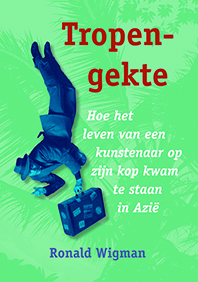
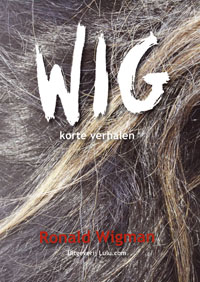
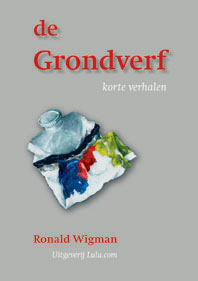
RONALD WIGMAN’S POETIC CARTOGRAPHY
by Arif Bagus Prasetyo
Vice Versa. Back and Forth. Travel.
Ronald Wigman is an artist who is deeply fascinated by traveling. Since he was a child, the appeal of travel had grown inside of him. Young Wigman loved to collect postcards filled with pictures from various geographical locations, cities, and countries. By collecting postcards, Wigman was conducting his first travel as a boy. The imaginary travel was the start of his real travel in the future and raising his creative imagination.
In his career as an artist, Wigman had conducted physical travel to many countries. The postcards collection from his childhood seems to anticipate the vision of grown-up Wigman as an artist with strong creative drives infiltrated with traveling spirit: the passion to conduct visual-esthetic exploration, create new artistic images, and dig new imagination from images buried deep in the files of experiences. Interest and experiences about travel greatly affected the form and the content of Wigman’s works.
The theme of Wigman’s works is strongly related to the experience of traveling. Many of his paintings recorded Wigman’s visual experiences when he interacts with various societies and cultures in different places. For example, Wigman likes to depict persons in their religious clothes originated from religions all over the world, cuisines from numerous countries served on the tables, traditional life in Bali. Feet, shoes, and sandals – vital instruments to walk – are also subjects that matters in many of Wigman’s paintings. In 2003, Wigman who is also a shoes collector even created series of paintings with the subject “foot using shoes”. Wigman’s paintings often ornamented with textual elements from different languages, and calligraphic characters from various countries such as Arabic, Chinese, or Egyptian characters. Recounting his encounter with the other, Wigman worked on painting portraits of his friends.
Stylistically, Wigman’s paintings also carried the sediment of his experience and thoughts about travel. When going through a journey, a person will experience space. Traveling is a spatial experience. One needs to organize his spatial experience into an understandable structure in his space of experience so he won’t get lost in the travel. The appropriate tool to organize the spatial experience is the map.
Wigman likes maps: city maps, road maps, atlas, globe. Wigman’s fascination by maps resonates on the esthetic of his works. Just like maps, the images in Wigman’s paintings are built structurally based on arrangement of color fields forming a kind of mosaic, almost without illusion of three-dimensional space. The outlines of the color fields are connected, sometimes in a complex way resembling road system on a map. Like a cartographer, Wigman mapped his visual-intellectual-emotional experiences in three-dimensional space into two-dimensional designs.
Resembling maps which only represent a certain part of a wider geographical scope, Wigman’s paintings appear not to end in the canvas limit. In his paintings, the pictorial space is open. Lines and color fields seem to be coming from, and leading to, a vacuum of vision across the pictorial space. It seems that the pictorial space is a place for transit in an endless travel.
A map essentially is an image of the formation of three-dimensional space seen from above and abstracted on two-dimensional plane. In the era of modern technology, most maps are made by taking pictures of a geographical area from above with the help of airplane or satellite. Same as maps, Wigman’s paintings generally display images of reality seen from certain height, with top-down perspective. Wigman tends to portray reality, such as market activities or dishes on the table, with bird’s eye view. Of course, Wigman also painted using normal perspective, examining things from horizontal point of view. However, the pattern of lines and color fields still consistently resemble a map.
It is very interesting to observe that the top-bottom perspective encourages Wigman to emphasize the image of human hands in his paintings. The size of the hands of the figures in his paintings often seems too large, out of proportion. For Wigman, hands substitute for face as an important human communication tool, especially when people are seen from above and their faces become invisible, losing their communicative function.
Looking from above, on a high, is the perspective of a cartographer with “panoptic” capacity who wanted to summarize and control the spatial experience. Cartography expects to locate space in optical grip, change the spatial experience into a scheme that organized, planned, and eventually mastered. However, a map is the result of reduction. A map does not include what is particular, what beats behind the lines and the dots on the two-dimensional paper.
Wigman paints with the vision of a cartographer who has a strong sense of design. Even so, his paintings show that Wigman does not only work as a designer who serves plans and order. With the eye of a cartographer, Wigman conducted reduction on the complexity of his experiences in three-dimensional space in order to master the two-dimensional space of his canvases. Along with the reduction process, however, Wigman’s creative instincts move his body to enjoy, explore, and articulate various particular sensations that cannot be reduced or mapped.
An ordinary map sterilizes the spatial experience from the vibration of life. On the contrary, Wigman’s cartography celebrates passion, wave of the life forces that cannot be fully controlled by plans and organization. There is passion recorded in the arrangement of shivering lines, as though created in a feverish condition between conscious and unconscious, also in spontaneous expression of the brushstroke, in the interplay of shapes and dynamic colors, and in the creation of multilayered surface. Wigman paints a “soul map” which give dramatic pictorial tension filled with sense and meaning.
A cartographer makes a map to build an absolut organization of space. On the other hand, Wigman created a cartography suggesting a relative organization of space. He produces space, plays with space, creates images, notes charm, finds surprises. His paintings are not only construction made from the thought that analize and design, but they grow together with rhythm, mood, and instinctive drives flowing in the process of painting.
Like pedestrians who walk without any certain destination, Wigman “mapped” his personal travel in reading reality. This mapping is not only done by the mind that formulates concepts, but also involving the body and soul that has desire, dreams, and enjoying the complexity of signs. The result is a “map” that describes structure and its “subconscious” level at the same time: a map that paradoxically reveals what cannot be mapped. Wigman’s art is a “poetic cartography” which compiles the power of design, the richness of literary content, and the charm of poetry.
Arif Bagus Prasetyo, curator, alumni IWP University of Iowa, United States
